Decorate Your Garden with Intriguing Sculptures
Have you ever walked through a garden and been captivated by a stunning sculpture? Sculptures can transform an ordinary outdoor space into an extraordinary oasis. They serve not just as decorations but as focal points that draw the eye and evoke emotions. Imagine stepping into your garden and being greeted by a magnificent piece of art that tells a story, sparks joy, or even provokes thought. The right sculpture can elevate the aesthetics of your outdoor space, making it a true extension of your home.
Incorporating sculptures into your garden design is like adding the final brushstroke to a masterpiece. Whether you prefer modern, classical, or whimsical styles, there’s a sculpture out there that perfectly aligns with your vision. The beauty of garden sculptures lies in their ability to harmonize with nature while standing out as unique art pieces. They can create a sense of balance and intrigue, inviting visitors to explore and appreciate the beauty surrounding them.
As you embark on the journey of decorating your garden with sculptures, consider the various styles available. Each style has its own personality and can evoke different feelings. For instance, a sleek, modern metal sculpture can introduce a contemporary flair, while a classic stone statue may evoke a sense of history and tradition. The key is to select a style that complements your garden’s overall design and atmosphere, enhancing its natural beauty rather than overwhelming it.
Moreover, the materials used in sculptures play a pivotal role in their impact. From the rustic charm of wood to the sleek allure of glass, each material brings its own character. Understanding the benefits and aesthetics of different materials can help you choose the perfect sculpture that not only looks great but also withstands the test of time. For instance, stone sculptures offer a timeless appeal, while metal sculptures can provide a striking contrast against the greenery of your garden.
But placement is just as important as style and material. Properly positioning your sculptures can enhance their visual appeal and create a cohesive look. Think of your garden as a stage, where each sculpture plays a vital role in the overall performance. By strategically placing sculptures, you can create focal points that guide the viewer's eye and maintain harmony with the surrounding plants. Imagine a beautiful sculpture nestled among vibrant flowers, drawing attention and creating a stunning visual narrative.
To ensure your garden sculptures remain breathtaking year-round, regular maintenance is essential. Each material requires different care, and understanding how to clean and preserve your sculptures will keep them looking fresh and vibrant. After all, a well-maintained sculpture not only enhances the beauty of your garden but also reflects your commitment to creating an inviting outdoor space.
So, whether you're looking to make a bold statement with a large contemporary piece or add subtle charm with a delicate statue, decorating your garden with intriguing sculptures is a fantastic way to express your personal style and create an enchanting atmosphere. Embrace the transformative power of art in your outdoor space, and watch as your garden becomes a captivating retreat that reflects your unique taste and creativity.
- What type of sculpture is best for a small garden? In smaller gardens, consider using smaller sculptures or those that are vertical in nature to draw the eye upward, creating the illusion of more space.
- How do I choose the right material for my garden sculpture? Think about your local climate and the maintenance level you’re willing to commit to. For example, metal sculptures may require occasional rust treatment, while stone offers durability.
- Can I create a theme with my garden sculptures? Absolutely! You can choose sculptures that share a common theme, such as animals, abstract forms, or historical figures, to create a cohesive look.
- How can I ensure my sculpture is secure in my garden? Depending on the weight and size of the sculpture, you may need to anchor it into the ground or place it on a stable base to prevent tipping or movement.
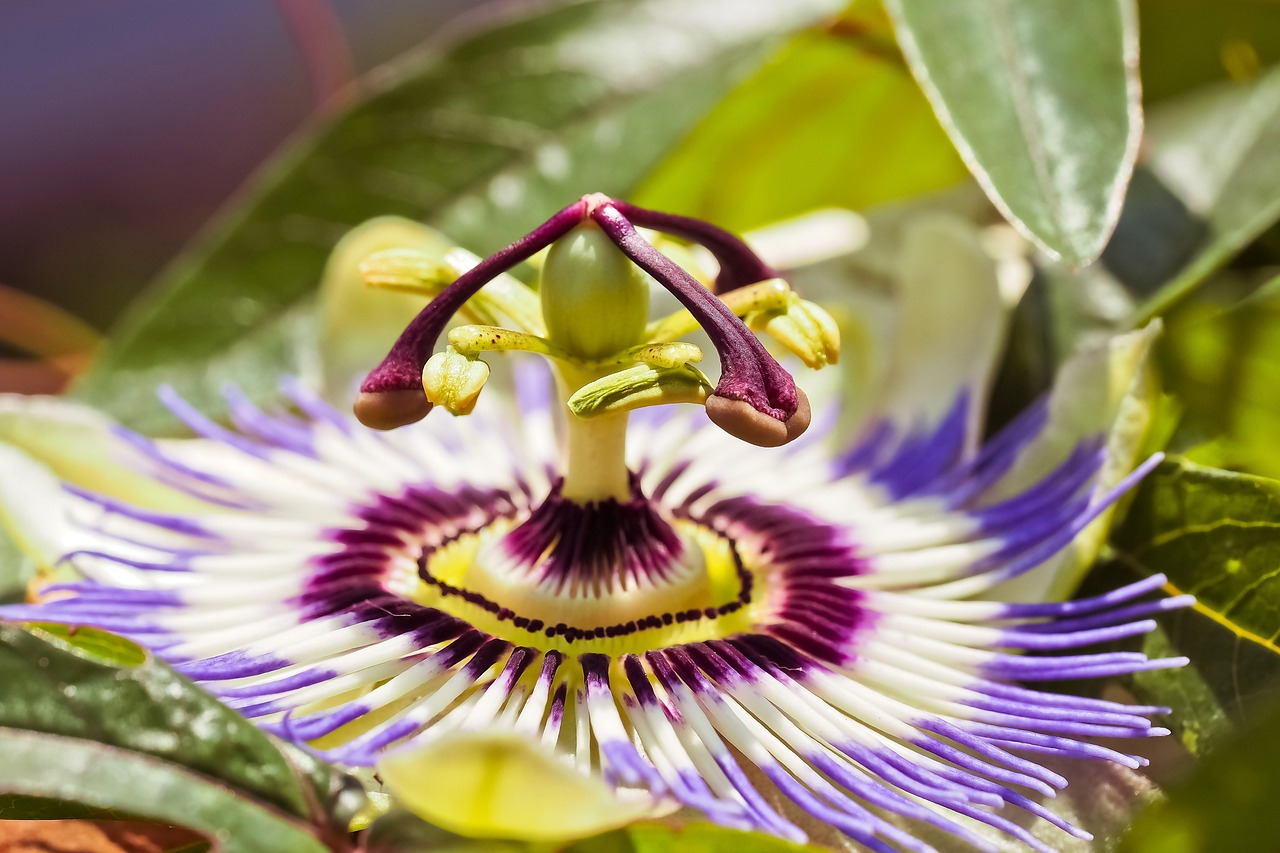
Choosing the Right Sculpture Style
Explore the transformative power of sculptures in garden design, enhancing aesthetics and creating focal points. Discover various styles, materials, and placement tips to elevate your outdoor space with captivating art pieces.
When it comes to selecting the right sculpture for your garden, the style you choose can make all the difference. Think of your garden as a canvas, and the sculpture as the brushstroke that adds depth and character. Different sculpture styles can evoke various emotions and themes, and it's essential to choose one that complements your garden's overall design and atmosphere. For instance, if your garden has a modern vibe, sleek, abstract sculptures might resonate well. On the other hand, if you're leaning towards a classic aesthetic, traditional figures or busts might be more appropriate.
To help you navigate this artistic journey, here are some popular sculpture styles to consider:
- Modern: Characterized by clean lines and abstract forms, modern sculptures often use materials like metal and glass, adding a contemporary touch to your garden.
- Classical: These sculptures draw inspiration from ancient art and often feature figures from mythology or history, perfect for creating a timeless atmosphere.
- Whimsical: If you want to inject a sense of fun into your garden, whimsical sculptures can bring a playful element. Think of quirky animals or fantastical creatures that spark joy.
Choosing the right style doesn't just enhance visual appeal; it also sets the mood of your outdoor space. Imagine walking through your garden and encountering a serene Buddha statue that invites tranquility, or a lively abstract piece that inspires creativity. The key is to consider the emotions you want to evoke and how the sculpture will interact with the natural surroundings.
Additionally, think about the scale of the sculpture in relation to your garden. A large, imposing piece can serve as a stunning focal point, while smaller sculptures can be strategically placed among plants to create delightful surprises for visitors. It's all about balance and harmony. For example, if you have a sprawling garden, a grand sculpture can anchor the space, while a small, intricate piece can invite closer inspection.
Ultimately, the right sculpture style is one that resonates with you personally. Your garden should reflect your taste and personality, so take your time exploring different options. Visit local galleries, attend art fairs, or even browse online marketplaces to find pieces that speak to you. Remember, your garden is an extension of your home and a place where you can express your creativity and style.
Regular maintenance is essential to preserve the beauty of garden sculptures. Learn practical tips for cleaning and caring for different materials to ensure they remain stunning year-round.
Q: How do I choose the right size sculpture for my garden?
A: Consider the scale of your garden and the surrounding elements. A large sculpture can serve as a focal point, while smaller pieces can create interest in more intimate spaces.
Q: What materials are best for outdoor sculptures?
A: Materials like stone, metal, and weather-resistant wood are ideal for outdoor sculptures due to their durability and ability to withstand the elements.
Q: How can I ensure my sculpture complements my garden's design?
A: Think about the overall theme of your garden. Choose a sculpture style and material that aligns with your garden's aesthetics and color palette.
Q: How often should I clean my garden sculptures?
A: It depends on the material and location. Generally, a good cleaning once or twice a year is sufficient, but more frequent cleaning may be needed in dusty or polluted areas.
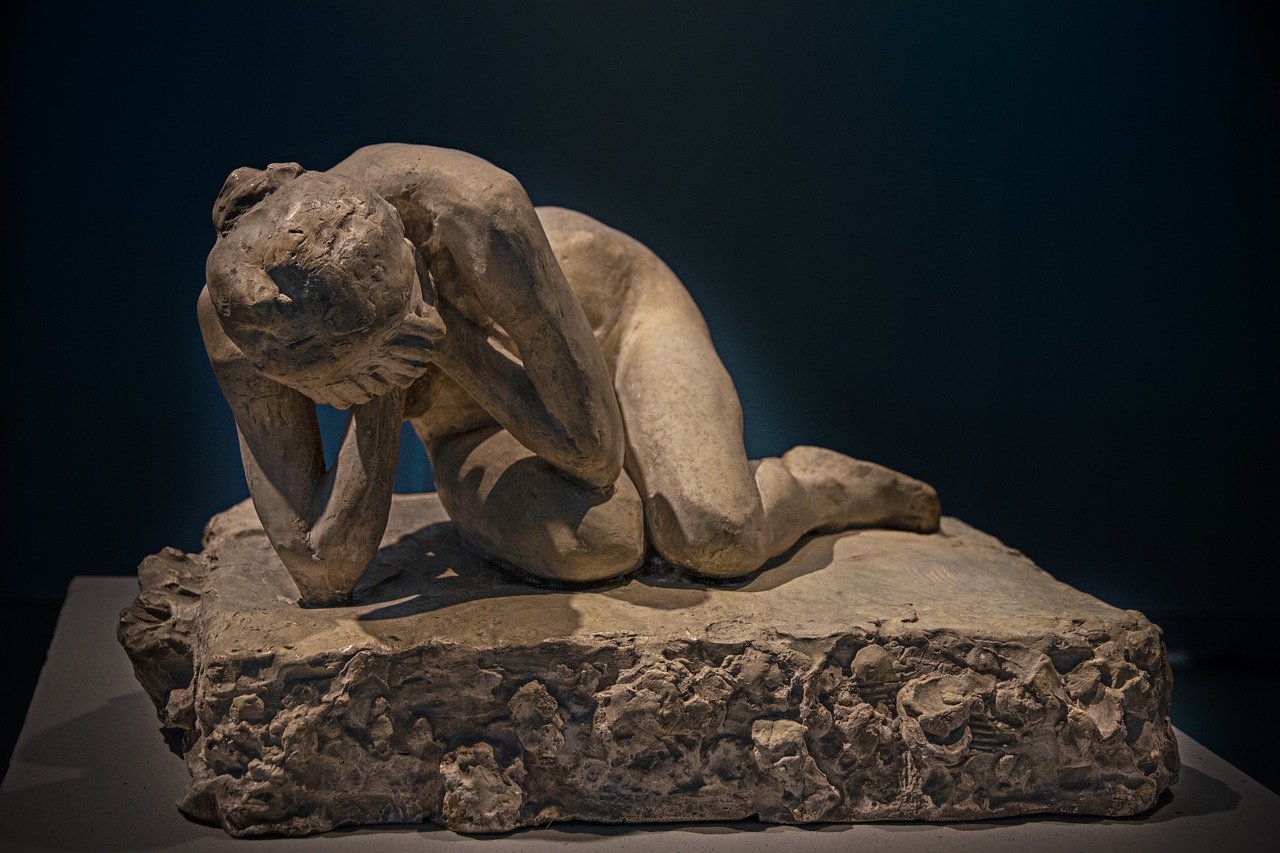
Materials for Garden Sculptures
When it comes to choosing the perfect sculpture for your garden, the material plays a pivotal role in determining not just the aesthetic appeal but also the longevity and maintenance of the piece. Each material has its own unique characteristics, offering different vibes and visual impacts that can transform your outdoor space. From the rustic charm of stone to the sleek elegance of metal, the options are as diverse as the gardens themselves. Let's delve into some popular materials used for garden sculptures and explore their benefits.
Stone sculptures are a classic choice, providing a timeless and natural look that seamlessly blends with outdoor environments. They evoke a sense of permanence and stability, making them ideal for gardens that aim for an enduring aesthetic. Common types of stone used include marble, granite, and limestone, each offering distinct textures and colors. For instance, marble tends to have a smooth, polished finish that exudes elegance, while granite is known for its durability and variety of hues. The choice between these stones often boils down to your garden's overall theme and the specific look you wish to achieve.
When comparing marble and granite, it’s essential to consider their differences. Marble is softer and can be more easily sculpted into intricate designs, making it a favorite for detailed artwork. However, it requires more maintenance to prevent staining and weathering. On the other hand, granite is incredibly tough and resistant to the elements, making it a practical choice for outdoor settings. If you’re looking for a sculpture that can withstand harsh weather while still looking stunning, granite might be your best bet. Here’s a quick comparison:
| Feature | Marble | Granite |
|---|---|---|
| Durability | Moderate | High |
| Maintenance | High | Low |
| Appearance | Elegant and polished | Textured and varied |
Weather resistance is another crucial factor to consider when selecting a material. Not all stones are created equal when it comes to withstanding the elements. For instance, while granite can endure rain, snow, and sun without significant wear, softer stones like limestone may deteriorate over time if exposed to harsh conditions. If your garden is located in an area that experiences extreme weather, opting for a more resilient material will ensure your sculpture remains a beautiful focal point for years to come.
Metal sculptures introduce a contemporary flair to garden design. They can be crafted from various metals, including steel, bronze, and aluminum. Each metal offers its own unique finish and style, allowing for creative expression in your garden. For example, bronze has a rich, warm tone that can develop a beautiful patina over time, enhancing its character. Steel, on the other hand, can be treated to resist rust, making it a durable choice for outdoor settings. The reflective quality of metal also creates striking visual contrasts against the natural elements of your garden, adding depth and intrigue.
In conclusion, selecting the right material for your garden sculpture is essential for achieving the desired aesthetic and ensuring longevity. Whether you opt for the classic charm of stone or the modern appeal of metal, understanding the unique characteristics of each material will help you make an informed decision that enhances your outdoor space.
- What is the best material for outdoor sculptures? It depends on your garden's theme and climate. Granite and metal are great for durability, while marble offers beauty but requires more maintenance.
- How do I maintain my garden sculptures? Regular cleaning with mild soap and water is recommended. For stone sculptures, ensure they are sealed to prevent staining.
- Can I use sculptures in small gardens? Absolutely! Smaller sculptures can create focal points without overwhelming the space. Just choose wisely to fit the scale of your garden.

Stone Sculptures
When it comes to adding a touch of elegance and timelessness to your garden, stand out as a remarkable choice. These artistic pieces not only enhance the aesthetic appeal of your outdoor space but also create a sense of permanence and connection with nature. Imagine walking through a lush garden, and your eyes are drawn to a beautifully carved stone figure that seems to tell a story of its own. The natural textures and colors of stone can blend seamlessly with your plants and flowers, creating a harmonious environment that invites relaxation and contemplation.
There are various types of stone used for sculptures, each with its own unique charm and characteristics. Popular choices include marble, granite, limestone, and sandstone. Each type offers different durability levels, textures, and colors, allowing you to choose the perfect fit for your garden's theme. For instance, marble is known for its smooth surface and elegant appearance, making it ideal for classical designs, while granite is more robust and can withstand harsh weather conditions, making it suitable for contemporary settings.
One of the most significant advantages of stone sculptures is their durability. While many materials may fade or deteriorate over time, stone can endure the test of time, making it a wise investment for your garden. However, it’s essential to consider the specific characteristics of the stone you choose. For example, softer stones like limestone may require more care and maintenance compared to harder stones like granite, which can handle the elements with ease. To help you understand the differences better, here’s a quick comparison:
| Type of Stone | Durability | Maintenance | Appearance |
|---|---|---|---|
| Marble | Moderate | Requires regular sealing | Elegant and smooth |
| Granite | High | Low maintenance | Rugged and varied |
| Limestone | Low to Moderate | Needs frequent care | Natural and rustic |
| Sandstone | Moderate | Occasional sealing | Warm and earthy |
Furthermore, the weather resistance of stone sculptures is crucial for ensuring their longevity. While granite can withstand extreme weather, marble might be more susceptible to staining or weathering if not properly maintained. Therefore, understanding the weather resistance of different stones is essential when selecting a sculpture for your garden. If you live in an area with harsh winters or heavy rainfall, opting for a more durable stone like granite or a weather-resistant treatment for softer stones can save you from future headaches.
In conclusion, stone sculptures are a fantastic way to elevate your garden's design. They provide a sense of history, art, and connection to nature that few other materials can offer. By carefully selecting the type of stone and considering factors like durability and weather resistance, you can choose a sculpture that not only enhances your garden's beauty but also stands the test of time. So, whether you’re looking for something modern or classical, there’s a stone sculpture out there waiting to become the centerpiece of your outdoor oasis.
- What is the best type of stone for outdoor sculptures?
Granite is often recommended due to its durability and weather resistance, but marble offers elegance and beauty. - How do I maintain my stone sculptures?
Regular cleaning and sealing are essential for most stones to prevent staining and weathering. - Can stone sculptures withstand harsh weather?
Yes, but the level of resistance varies by stone type. Granite generally performs best in extreme conditions. - Are stone sculptures heavy?
Yes, stone sculptures can be quite heavy, so ensure your garden's foundation can support them.

Marble vs. Granite
When it comes to choosing between marble and granite for your garden sculptures, the decision can be as intricate as the designs themselves. Both materials boast unique characteristics, making them popular choices for outdoor art. Marble, with its elegant veining and soft luster, exudes a classic charm that can elevate the aesthetic of any garden. It’s often associated with luxury and refined taste, making it an excellent choice for traditional or formal garden settings. However, marble is more porous and can be prone to staining and weathering over time, which means it may require more maintenance to keep it looking pristine.
On the other hand, granite is known for its durability and resilience. This igneous rock comes in a variety of colors and patterns, offering a more contemporary look that can blend beautifully with modern landscaping. Granite sculptures can withstand harsh weather conditions, making them ideal for outdoor settings where they might be exposed to the elements. They are less susceptible to chipping and cracking, which means less upkeep and a longer lifespan. However, granite’s hardness can make it more challenging to carve intricate designs compared to the softer marble.
To help you visualize the differences, here’s a quick comparison:
| Feature | Marble | Granite |
|---|---|---|
| Appearance | Elegant, soft veining | Bold, varied patterns |
| Durability | Less durable, prone to staining | Highly durable, weather-resistant |
| Maintenance | Requires regular sealing | Low maintenance, easy to clean |
| Cost | Generally more expensive | Varies, but often more affordable |
Ultimately, the choice between marble and granite depends on your garden's overall design and your personal preference. If you’re aiming for a classic, sophisticated look and are willing to invest time in maintenance, marble could be your go-to option. However, if you prefer something more robust and contemporary, granite is the way to go. Each material tells a story, and whichever you choose will undoubtedly add a unique touch to your outdoor space.
- How do I clean my marble or granite sculptures? For marble, use a soft cloth with a pH-neutral cleaner, while granite can be cleaned with mild soap and water.
- Can I use marble or granite sculptures in all climates? Granite is generally more suitable for all climates due to its weather resistance, while marble may require more protection in harsh conditions.
- Are there any specific care tips for outdoor sculptures? Yes, regular cleaning and applying a protective sealant can help maintain the integrity of both materials.

Weather Resistance
When it comes to selecting the perfect sculpture for your garden, one of the most critical factors to consider is . After all, your beautiful art piece will be exposed to the elements, and you want it to stand the test of time. Different materials have varying degrees of durability and resilience against harsh weather conditions, including rain, snow, sun, and wind. Understanding these differences can help you make an informed decision that ensures your sculpture remains stunning for years to come.
For instance, stone sculptures are often revered for their durability, but not all stones are created equal. Granite, for example, is highly resistant to weathering and can withstand the harshest conditions, making it an excellent choice for outdoor displays. On the other hand, softer stones like limestone may require more maintenance and care to prevent erosion over time. If you opt for a stone sculpture, consider its location and the typical weather patterns in your area.
When it comes to metal sculptures, the choice of metal is equally important. Stainless steel is a popular option due to its resistance to rust and corrosion, while aluminum is lightweight and can also endure various weather conditions. However, metals like iron may require protective coatings or regular upkeep to prevent rusting, especially in humid or coastal environments. It's crucial to weigh the aesthetic appeal of the metal against its maintenance needs.
For those who prefer a more organic look, wooden sculptures can bring warmth to your garden. However, they are typically less weather-resistant than stone or metal. If you choose wood, look for treated varieties or hardwoods that are naturally more resistant to decay. Regular sealing and maintenance will also extend the life of wooden sculptures, ensuring they can withstand the elements.
Finally, glass sculptures can add a unique touch to your garden, reflecting light and colors beautifully. However, they can be more fragile than other materials. Ensure you choose tempered or thick glass types designed for outdoor use to minimize the risk of breakage. Regular cleaning is essential to maintain their clarity and brilliance, especially in environments with high dust or pollen levels.
In summary, here are some key points to remember when considering the weather resistance of garden sculptures:
- Granite: Highly durable and weather-resistant.
- Stainless Steel: Resistant to rust and corrosion; low maintenance.
- Wood: Warm aesthetic but requires regular maintenance.
- Glass: Beautiful but fragile; ensure it's suitable for outdoor use.
By carefully selecting materials based on their weather resistance, you can ensure that your garden sculptures not only enhance the beauty of your outdoor space but also withstand the test of time. So, take your time, do your research, and choose wisely to enjoy captivating art pieces that bring joy and inspiration to your garden for many seasons to come.
Q: How can I determine the best material for my garden sculpture?
A: Consider your local climate, the sculpture's intended location, and how much maintenance you're willing to perform. For extreme weather conditions, opt for durable materials like granite or stainless steel.
Q: Do I need to maintain my sculptures regularly?
A: Yes, regular maintenance is essential, especially for materials like wood or metal, which may require cleaning, sealing, or protective coatings to ensure longevity.
Q: Can I use indoor sculptures outside?
A: It's best to use sculptures specifically designed for outdoor environments. Indoor sculptures may not withstand the elements and could deteriorate quickly.

Metal Sculptures
Explore the transformative power of sculptures in garden design, enhancing aesthetics and creating focal points. Discover various styles, materials, and placement tips to elevate your outdoor space with captivating art pieces.
Different sculpture styles can evoke various emotions and themes. Learn how to select a style that complements your garden's overall design and atmosphere, whether it's modern, classical, or whimsical.
Sculptures can be crafted from a variety of materials, each offering unique benefits and aesthetics. Explore options like stone, metal, wood, and glass to find the perfect fit for your garden.
Stone sculptures provide a timeless and natural look. Discover the various types of stone used, their durability, and how they can enhance your garden's beauty while blending seamlessly with the landscape.
Both marble and granite offer distinct qualities for sculptures. Learn about their differences in appearance, maintenance, and how to choose between them based on your garden's style.
Understanding the weather resistance of different stones is crucial for longevity. Find out which materials withstand the elements best and require minimal upkeep in outdoor settings.
Metal sculptures can add a contemporary touch to your garden, infusing it with a sense of modernity and flair. The beauty of metal lies not only in its durability but also in its ability to create striking visual contrasts against the natural elements of your garden. Imagine a sleek, rusted steel figure standing tall amidst vibrant flowers or a polished aluminum piece reflecting the sunlight. This interplay of materials can create an engaging aesthetic that draws the eye and sparks conversation.
When considering metal for your garden sculptures, you have a variety of options, including:
- Stainless Steel: Renowned for its resistance to rust and corrosion, stainless steel sculptures can maintain their shine and integrity for years, even in harsh weather conditions.
- Corten Steel: This weathering steel develops a protective rust layer, giving it a rustic charm that blends beautifully with natural landscapes.
- Aluminum: Lightweight and versatile, aluminum can be molded into intricate designs and is resistant to corrosion, making it a popular choice for detailed sculptures.
Each type of metal offers unique finishes and textures, allowing you to customize your sculpture to fit your garden's theme. Whether you prefer a smooth, polished look or a rough, industrial feel, there's a metal sculpture that can meet your aesthetic desires. Moreover, the reflective properties of metal can create stunning visual effects, especially during sunrise and sunset, when the changing light plays off the surface.
However, it's essential to consider the placement of metal sculptures in your garden. Positioning them near plants can create a beautiful contrast, while placing them in open spaces can enhance their visibility and impact. The right placement can turn a simple metal sculpture into a breathtaking focal point that captivates your visitors and enhances the overall beauty of your outdoor space.
Proper placement of sculptures can enhance their visual appeal and impact. Discover strategic tips for positioning sculptures in your garden to create focal points and maintain harmony with surrounding plants.
Learn how to use sculptures as focal points to draw attention and guide the viewer's eye through your garden. Explore techniques for highlighting these pieces effectively.
Sculptures should harmonize with the landscape. Discover how to integrate sculptures with plants, pathways, and other garden elements for a cohesive and inviting outdoor environment.
Regular maintenance is essential to preserve the beauty of garden sculptures. Learn practical tips for cleaning and caring for different materials to ensure they remain stunning year-round.
Q: How do I choose the right sculpture for my garden?
A: Consider the overall style and theme of your garden, the size of the sculpture, and the materials used. Think about how the sculpture will interact with the surrounding plants and elements.
Q: What materials are best for outdoor sculptures?
A: Materials like stone, metal, and certain types of wood are popular for outdoor sculptures due to their durability. Stainless steel and Corten steel are excellent choices for metal sculptures.
Q: How can I maintain my garden sculptures?
A: Regular cleaning is key. For stone sculptures, use a gentle brush and water. For metal sculptures, check for rust and treat it as necessary. Always follow specific care instructions based on the material.
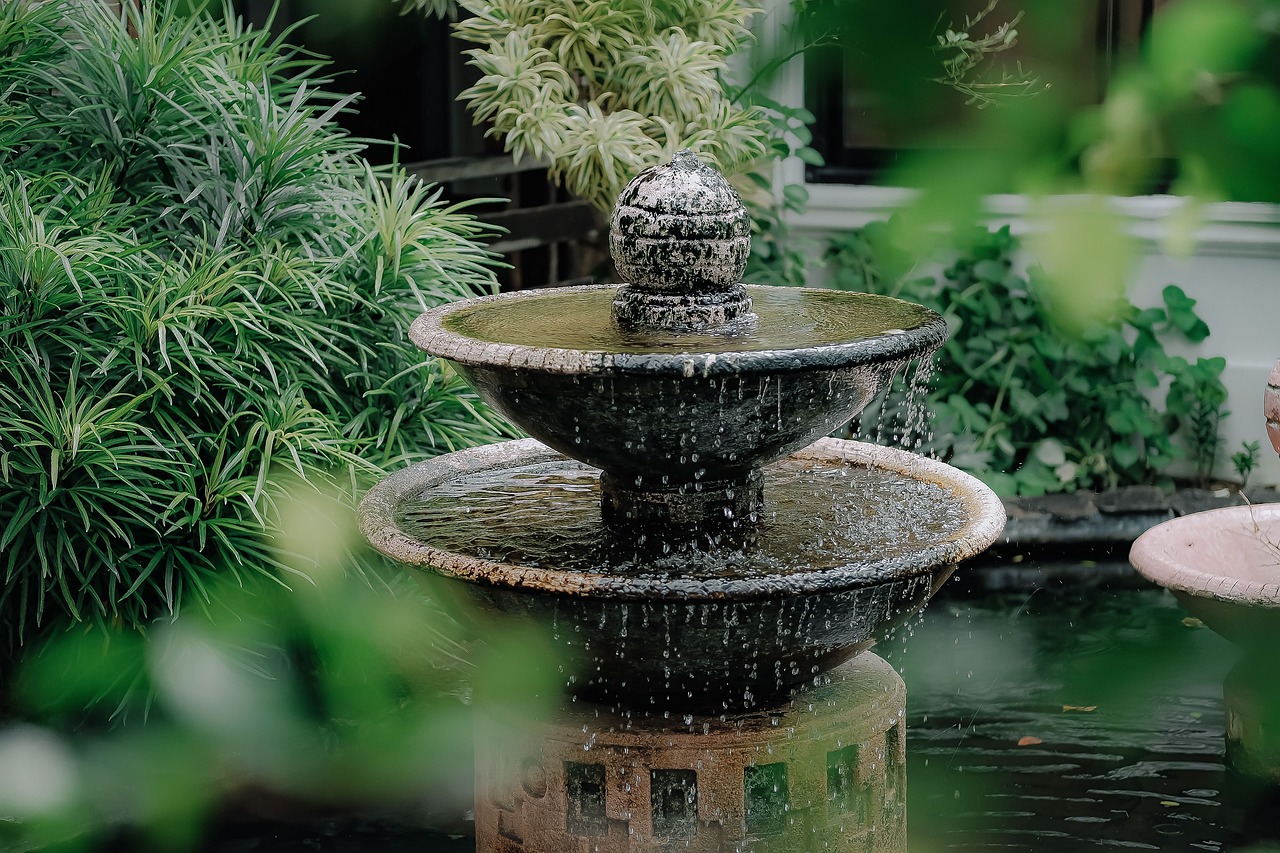
Placement Tips for Maximum Impact
When it comes to decorating your garden with sculptures, placement is everything. Imagine walking through your garden and being immediately captivated by a stunning piece of art that draws your eye and elevates the entire space. Proper placement not only enhances the visual appeal of your sculptures but also creates a sense of harmony with the surrounding elements. So, how do you achieve that perfect balance? Here are some strategic tips to consider.
First and foremost, think about creating focal points. Just like in a painting, a sculpture can serve as a centerpiece that attracts attention and guides the viewer's gaze. Position your sculpture in a spot where it can stand out, such as at the end of a pathway or in a clearing surrounded by lush greenery. This not only makes the sculpture a point of interest but also encourages visitors to explore the garden further. You might even consider using lighting to highlight the sculpture at night, transforming it into a magical feature that continues to impress after sunset.
Another essential aspect is to consider the scale and proportion of your sculpture in relation to the surrounding plants and structures. A massive, imposing sculpture can dominate a small garden, while a petite piece might get lost in a larger landscape. To find the right balance, take measurements and visualize how the sculpture will fit into the existing space. A good rule of thumb is to choose sculptures that complement the size of your garden and the height of nearby plants. For instance, a tall sculpture can provide vertical interest in a garden full of low shrubs, while smaller sculptures can be tucked among flowers for a delightful surprise.
Additionally, think about the pathways and lines of sight within your garden. Sculptures should be placed in a way that they can be seen from various angles and perspectives. Imagine walking through your garden and encountering a sculpture that seems to peek out from behind a bush or stands proudly at the end of a garden path. This creates a sense of discovery and invites exploration. Consider placing sculptures along the main paths or at junctions where visitors might pause to take in their surroundings.
Finally, don't forget about seasonal changes. The beauty of your garden can shift dramatically with the changing seasons, and your sculptures should be able to adapt to these changes as well. For instance, a sculpture surrounded by blooming flowers in spring may look entirely different when winter arrives. Choose materials and colors that will stand out against various backgrounds, ensuring that your sculptures remain captivating year-round. You might even consider integrating seasonal decorations that complement the sculptures, such as lights during the holidays or vibrant flowers in the summer.
In summary, the placement of your garden sculptures is crucial for maximizing their impact. By creating focal points, considering scale, utilizing pathways, and accounting for seasonal changes, you can transform your outdoor space into a stunning gallery that resonates with visitors. So, get out there, visualize your design, and let your garden sculptures shine!
- How do I choose the right spot for my garden sculpture? Look for areas that naturally draw the eye, such as the end of a pathway or a clearing surrounded by foliage.
- Can I move my sculpture once it's placed? Yes, sculptures can be repositioned, but it's best to choose a permanent spot where they can thrive in harmony with the garden.
- What materials are best for outdoor sculptures? Materials like stone, metal, and weather-resistant wood are excellent choices for outdoor sculptures due to their durability.
- How can I enhance the visibility of my sculptures at night? Consider installing garden lights or spotlights that highlight your sculptures and create an enchanting atmosphere after dark.
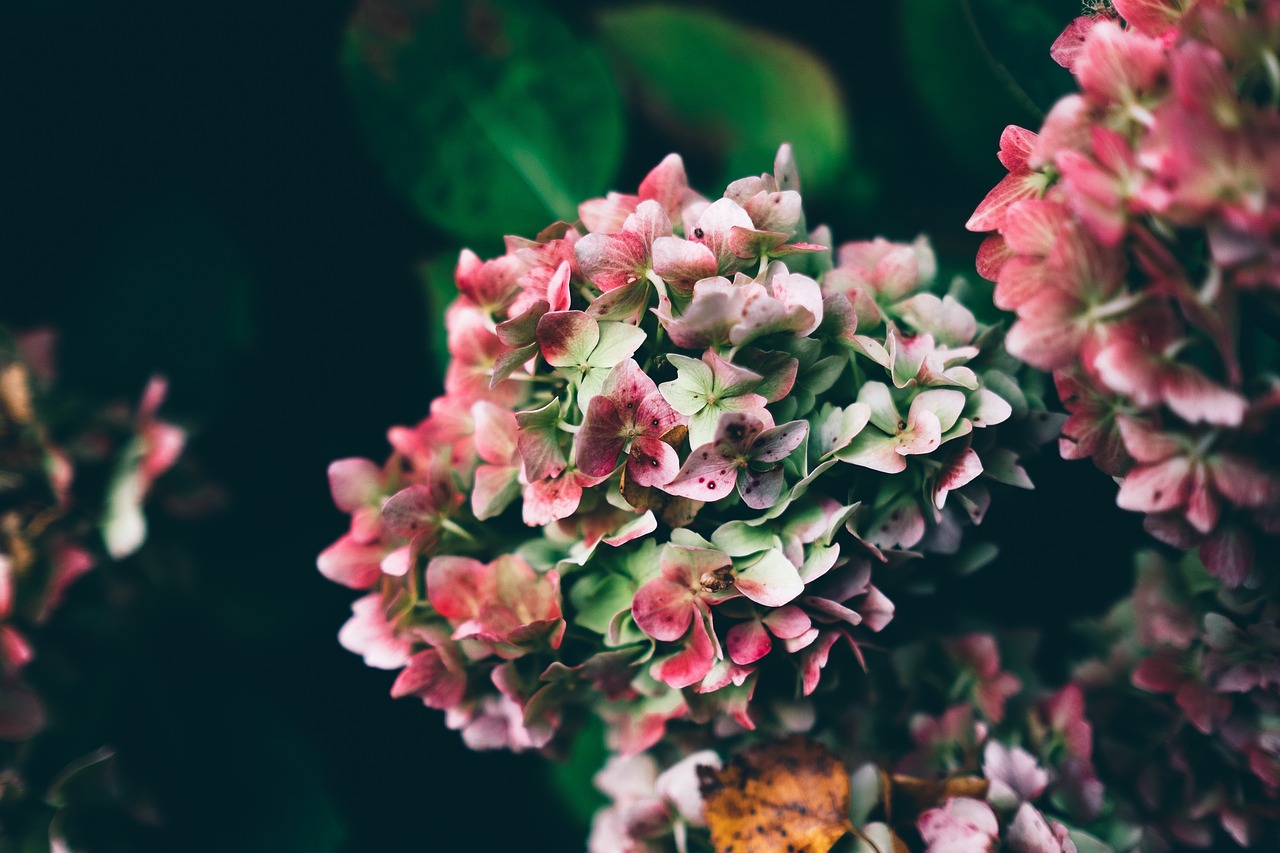
Creating Focal Points
When it comes to garden design, is like adding the cherry on top of a delicious sundae. Focal points draw the eye and guide visitors through your outdoor space, making it feel more inviting and thoughtfully arranged. Imagine walking into a garden where your gaze is immediately captured by a stunning sculpture; it not only enhances the beauty of the area but also sparks curiosity and conversation. So, how do you effectively create these visual anchors? Let's dive into some strategies that will help you make the most of your sculptures.
First and foremost, consider the scale of your sculptures in relation to your garden. A towering piece might overwhelm a small space, while a tiny sculpture could easily get lost in a larger landscape. Finding the right balance is key. For instance, if you have a sprawling garden, a large abstract sculpture can serve as a magnificent centerpiece, while a smaller, intricately detailed piece might be perfect for a cozy nook among flowering plants. This interplay of size and space can transform an ordinary garden into an extraordinary one.
Next, think about the placement of your sculptures. Positioning them along pathways or near seating areas can encourage exploration and interaction. As you stroll through your garden, having sculptures at strategic points will guide your journey and create a sense of flow. For example, you might place a striking metal sculpture at the end of a winding path, enticing visitors to walk towards it, or use a stone figure to frame a beautiful view. The idea is to make each sculpture a part of the narrative of your garden, leading the eye from one beautiful scene to another.
Lighting also plays a crucial role in highlighting your focal points. Imagine a beautiful evening where your garden sculptures are illuminated by soft, ambient lighting; they become enchanting silhouettes against the night sky. You can use spotlights to create dramatic effects or string lights to add a whimsical touch. The right lighting not only enhances the beauty of your sculptures but also extends the enjoyment of your garden into the evening hours.
Moreover, incorporating natural elements around your sculptures can amplify their impact. Consider creating a backdrop of lush greenery or vibrant flowers that complement the design and color of the sculpture. This not only helps the piece stand out but also creates a harmonious relationship between the art and nature. For instance, a rust-colored metal sculpture surrounded by bright green foliage can create a stunning contrast that catches the eye instantly.
Lastly, don't forget to regularly assess and adjust your sculptures as your garden evolves. Plants grow, seasons change, and sometimes, the perfect spot for a sculpture shifts. A piece that once felt like a focal point may need to be moved to maintain its prominence. Keeping your garden dynamic and responsive to these changes will ensure that your sculptures continue to inspire awe and appreciation.
In summary, creating focal points with sculptures in your garden is all about balance, placement, lighting, and integration with natural elements. By thoughtfully considering these aspects, you can elevate your outdoor space into a captivating art gallery that draws people in and leaves them enchanted. After all, your garden should be a reflection of your personality and style, showcasing the beauty of art in harmony with nature.
- What is the best material for outdoor sculptures? The best material often depends on your garden's climate. Stone and metal sculptures are generally more durable, while wood may require more maintenance.
- How do I choose the right size sculpture for my garden? Consider the scale of your garden and the surrounding plants. A larger garden can accommodate bigger sculptures, while a smaller garden may benefit from more petite pieces.
- Can I use sculptures in a vegetable garden? Absolutely! Sculptures can add beauty and interest to any garden type, including vegetable gardens. Just make sure they don't overshadow your plants!
- How can I maintain my garden sculptures? Regular cleaning and checking for any signs of wear are essential. Use appropriate cleaning methods based on the material of your sculpture.
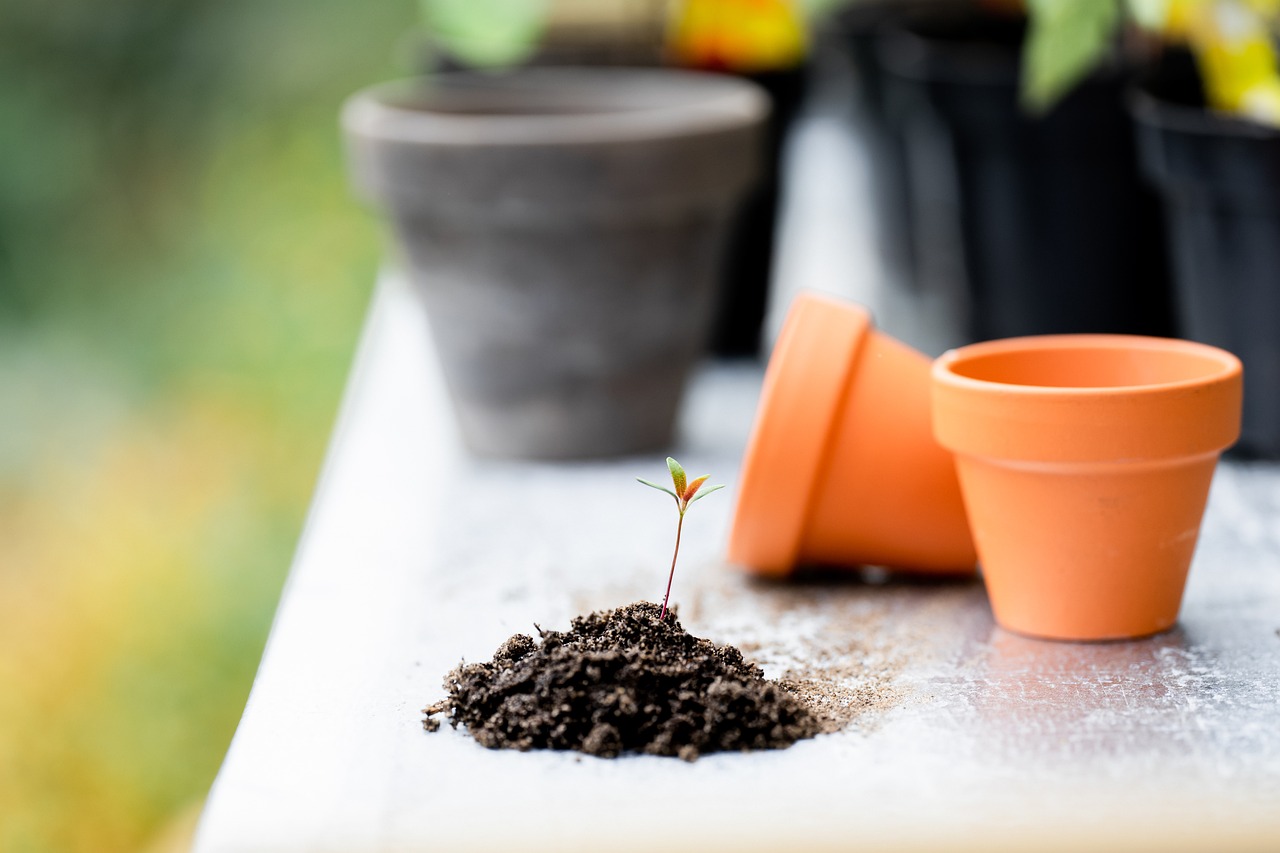
Integrating with Landscaping
Integrating sculptures with your landscaping is like adding the perfect seasoning to a dish; it elevates the entire experience. When you think about your garden as a cohesive space, every element should work in harmony, and sculptures can play a pivotal role in achieving that. Imagine walking through your garden and encountering a stunning piece of art that seamlessly blends with the flora around it. This is not just about placing a sculpture in a random spot; it’s about creating a dialogue between the sculpture and its surroundings.
To effectively integrate sculptures into your landscaping, consider the following aspects:
- Scale and Proportion: The size of the sculpture should complement the surrounding plants and structures. A large sculpture can dominate a small garden, while a tiny piece might get lost among towering flowers. Think of it as finding the right outfit for an occasion; you want to ensure everything fits well together.
- Color Harmony: Choose sculptures that either match or contrast beautifully with the colors of your plants. For instance, a vibrant red sculpture can pop against a backdrop of green foliage, creating a striking visual effect. It’s like choosing the right color palette for a painting; the right combinations can evoke powerful emotions.
- Surrounding Elements: Consider the other elements in your garden, such as pathways, water features, and seating areas. Positioning a sculpture near a bench can invite visitors to pause and appreciate the art, making the garden feel more welcoming. Think of it as setting the stage for a performance; every piece should contribute to the overall narrative.
Moreover, the placement of sculptures can guide the viewer's eye through your garden. When strategically positioned along pathways or at the end of a vista, sculptures can lead visitors on a journey, encouraging them to explore every nook and cranny. It’s much like a well-crafted story where every chapter builds upon the last, culminating in a satisfying conclusion.
Incorporating sculptures into your landscaping doesn't have to be a daunting task. Start by envisioning how each piece interacts with the plants and other features in your garden. Try to visualize the garden from different angles and at various times of day; the changing light can dramatically alter the perception of both the sculpture and the surrounding landscape. Just as a movie can look entirely different depending on the angle it’s shot from, your garden's beauty can transform based on your perspective.
Lastly, don’t forget about the seasonal changes. Sculptures can take on new meanings and aesthetics as the seasons shift. For example, a metal sculpture might reflect the sunlight beautifully in summer, while a stone piece may provide a stark contrast against a blanket of snow in winter. Embrace these changes, and allow your sculptures to tell a story throughout the year.
Q: How do I choose the right sculpture for my garden?
A: Consider the style of your garden, the materials that will withstand your local climate, and how the sculpture will interact with the surrounding plants and features.
Q: What materials are best for outdoor sculptures?
A: Stone, metal, and certain types of treated wood are popular choices for outdoor sculptures due to their durability and aesthetic appeal.
Q: How can I maintain my garden sculptures?
A: Regular cleaning, checking for wear and tear, and applying protective coatings (if necessary) will help maintain the beauty of your sculptures.
Q: Can I create a theme with my garden sculptures?
A: Absolutely! You can choose sculptures that reflect a specific theme, such as nature, mythology, or contemporary art, to create a cohesive narrative in your garden.

Maintaining Your Garden Sculptures
Just like any piece of art, your garden sculptures deserve a little TLC to keep them looking their best. Imagine walking through your garden and seeing a stunning sculpture that has lost its luster due to neglect. It's a bit like seeing a beautiful painting covered in dust, isn't it? Regular maintenance not only preserves the beauty of your sculptures but also enhances the overall aesthetic of your outdoor space. So, how do we keep these captivating art pieces in prime condition? Let’s dive in!
The first step in maintaining your garden sculptures is understanding the material they are made from. Each material has its own unique care requirements. For example, stone sculptures might need occasional washing with water and a gentle brush to remove dirt and algae, while metal sculptures could require rust prevention treatments to keep them looking shiny and new. Wooden sculptures, on the other hand, may need to be treated with sealants to protect them from moisture and insects. Here’s a quick overview:
| Material | Maintenance Tips |
|---|---|
| Stone | Wash with water; use a soft brush; check for cracks. |
| Metal | Apply rust prevention; clean with mild soap; check for paint chips. |
| Wood | Use sealants; check for rot; clean with a damp cloth. |
| Glass | Wipe with a glass cleaner; avoid harsh chemicals; check for chips. |
Now, let’s talk about the weather! Mother Nature can be a sculptor’s worst enemy. Rain, snow, and even the harsh sun can take a toll on your sculptures. For outdoor sculptures, it’s essential to check for any signs of weather damage regularly. If you notice any cracks or chips, it’s best to address them promptly to prevent further deterioration. For instance, applying a weather-resistant sealant can work wonders for stone and wood sculptures, acting as a protective barrier against the elements.
Another crucial aspect of maintenance is the location of your sculptures. If they're placed in an area where they’re frequently exposed to harsh weather or heavy foot traffic, they may require more frequent maintenance. Consider relocating sculptures to a more sheltered spot, or use landscaping elements like shrubs or decorative stones to provide some natural protection. This not only helps in preserving their integrity but also adds an extra layer of visual appeal to your garden.
Finally, don’t forget to give your sculptures a good scrub every now and then! A gentle wash with soap and water can do wonders to remove dirt and grime. For metal sculptures, a soft cloth and a little bit of olive oil can restore their shine. Think of it as giving your sculptures a spa day! Remember, a little effort goes a long way in keeping your garden art looking fresh and inviting.
- How often should I clean my garden sculptures? It's recommended to clean them at least twice a year, but more often if they are exposed to the elements.
- Can I use harsh chemicals on my sculptures? No, harsh chemicals can damage the finish of your sculptures. Stick to mild soap and water for cleaning.
- What should I do if my sculpture is damaged? Assess the damage and consider repairing it with appropriate materials or consult a professional for restoration.
- Do I need to protect my sculptures during winter? Yes, especially for materials like wood and metal, consider bringing them indoors or covering them to protect against ice and snow.
Frequently Asked Questions
- What types of sculptures are best for my garden?
Choosing the right sculpture depends on your garden's style and theme. If you have a modern garden, sleek metal or abstract sculptures might work best. For a more classical garden, consider stone or marble pieces that evoke tradition and elegance. Whimsical gardens can benefit from playful and colorful sculptures that add a sense of fun and creativity.
- How do I select the right material for my garden sculpture?
When selecting a material, think about the overall aesthetic you want to achieve. Stone sculptures offer a natural feel and are durable, while metal sculptures can provide a contemporary edge. Wood adds warmth but may require more maintenance. Glass can create stunning visual effects, especially in sunlight, but be mindful of its fragility.
- What are the differences between marble and granite sculptures?
Marble is softer and offers a more classic look with its unique veining, making it a popular choice for detailed sculptures. Granite, on the other hand, is more durable and weather-resistant, making it ideal for outdoor settings. If you want something that lasts through the seasons with minimal upkeep, granite might be your best bet.
- How can I create a focal point with my garden sculptures?
To create a focal point, position your sculpture where it can be easily seen from various angles, such as at the end of a pathway or near a seating area. Use plants and landscaping to frame the sculpture, drawing the viewer’s eye towards it. Lighting can also enhance its visibility during the evening, making it a striking centerpiece.
- What maintenance do garden sculptures require?
Maintenance varies by material. Stone sculptures typically need occasional cleaning with water and a soft brush to remove dirt and debris. Metal sculptures may require rust prevention treatments, while wood sculptures should be treated with weatherproofing products to extend their lifespan. Regularly check for any signs of wear and address them promptly to keep your sculptures looking their best.
- Can I place sculptures near water features in my garden?
Absolutely! Placing sculptures near water features can create a stunning visual effect, enhancing the overall ambiance of your garden. Just ensure that the materials used for the sculpture are suitable for a moist environment to prevent any damage over time.


















